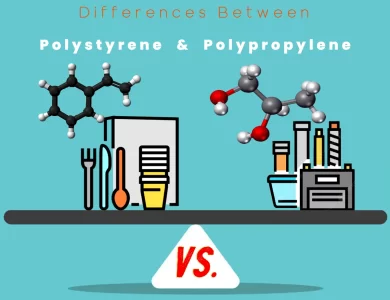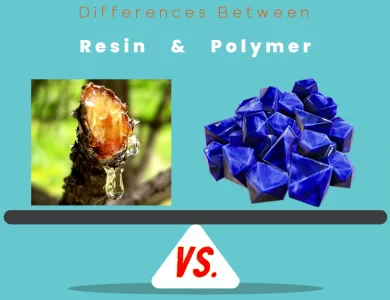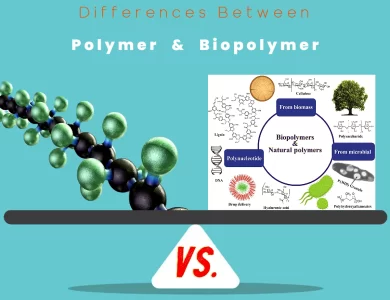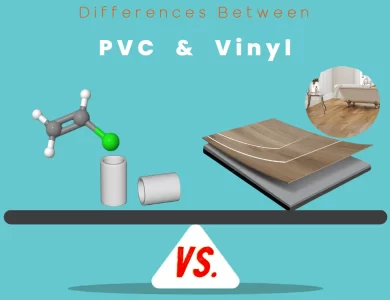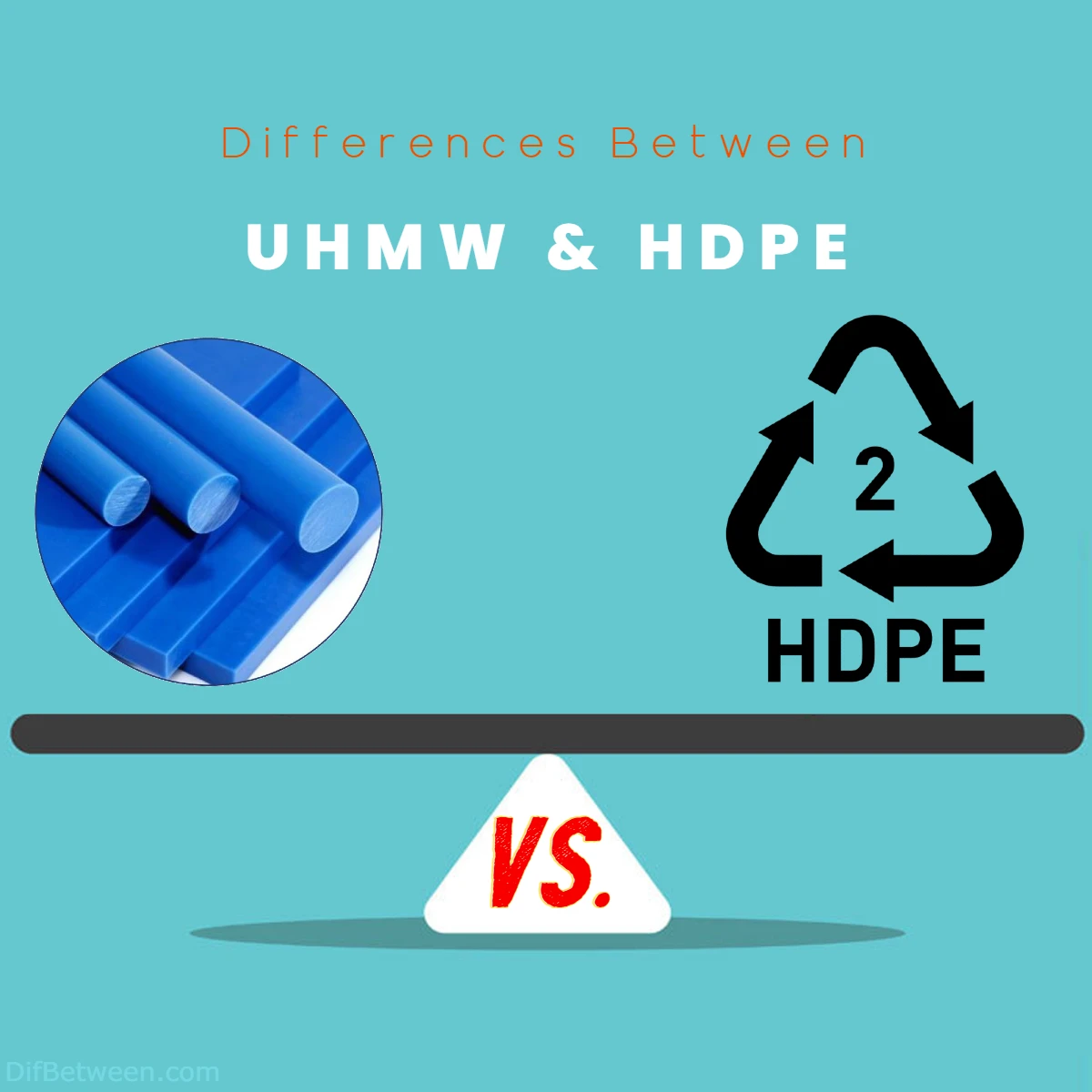
| Aspect | Ultra-High Molecular Weight Polyethylene (UHMW) | High-Density Polyethylene (HDPE) |
|---|---|---|
| Molecular Weight | Exceeds 3 million g/mol | Typically ranges from 100,000 to 700,000 g/mol |
| Mechanical Properties | Exceptional tensile strength, impact resistance | Good balance between rigidity and flexibility |
| Wear Resistance | Outstanding wear and abrasion resistance | Moderate wear resistance |
| Temperature Resistance | Excellent low-temperature resistance, limited high-temperature use | Broad temperature resistance range |
| Machinability | Challenging to machine; requires specialized techniques | Relatively easier to machine and fabricate |
| Chemical Resistance | Excellent resistance to chemicals and solvents | Excellent resistance, but may vary |
| UV Resistance | Poor UV resistance; needs additional protection | Good UV resistance |
| Electrical Insulation | Excellent electrical insulation properties | Good electrical insulation properties |
| Regulatory Compliance | Complies with various regulatory standards | Complies with various regulatory standards |
| Cost | More expensive due to specialized properties | Generally more cost-effective |
| Availability | Widely available, ensuring a stable supply chain | Widely available, ensuring a stable supply chain |
| Environmental Impact | Relatively environmentally friendly | Relatively environmentally friendly |
| Color Options | Available in various colors for aesthetic purposes | Available in various colors for aesthetic purposes |
| Applications | Conveyor systems, automotive components, medical devices | Packaging, water management, outdoor equipment |
When it comes to polymers that have revolutionized the world of industrial applications, Ultra-High Molecular Weight Polyethylene (UHMW) and High-Density Polyethylene (HDPE) stand out as major players. These two materials have paved the way for innovative solutions across various industries, from manufacturing to healthcare and beyond. While both UHMW and HDPE share some similarities due to their polyethylene composition, they each possess distinct properties that make them suitable for specific applications. Let’s delve into the key differences between UHMW and HDPE, exploring their unique characteristics, strengths, and applications.
Differences Between UHMW and HDPE
The key distinctions between UHMW (Ultra-High Molecular Weight Polyethylene) and HDPE (High-Density Polyethylene) lie in their molecular weight and resulting properties. UHMW boasts an extremely high molecular weight, endowing it with exceptional wear resistance and impact absorption. This makes it ideal for applications necessitating reduced friction and extended equipment lifespan, such as conveyor systems and automotive components. In contrast, HDPE, with its more moderate molecular weight, strikes a balance between rigidity and flexibility, rendering it versatile for packaging, water management, and outdoor equipment. The choice hinges on factors like wear resistance, UV exposure, temperature range, and budget considerations, enabling industries to make informed decisions aligned with specific application needs.
1. Molecular Weight Matters:
Both UHMW and HDPE belong to the polyethylene family, which is known for its exceptional chemical resistance and low coefficient of friction. However, one of the most prominent differences lies in their molecular weight. As the name suggests, Ultra-High Molecular Weight Polyethylene (UHMW) boasts an extraordinarily high molecular weight compared to standard HDPE. This distinction results in several diverging properties that dictate their use cases.
UHMW: UHMW exhibits an impressive molecular weight range, often exceeding 3 million g/mol. This molecular weight contributes to its remarkable durability, impact resistance, and abrasion resistance. UHMW’s long polymer chains entwine to form a dense network that can withstand heavy loads and extreme wear, making it an excellent choice for applications that involve sliding or abrasive interactions. Industries such as conveyor systems, bulk material handling, and automotive manufacturing benefit from UHMW’s ability to reduce friction and enhance equipment lifespan.
HDPE: While High-Density Polyethylene (HDPE) also demonstrates commendable molecular weight, it falls short of the exceptional levels seen in UHMW. HDPE’s molecular weight typically ranges from 100,000 to 700,000 g/mol. This distinction results in HDPE’s distinct mechanical properties. It offers a balance between stiffness and toughness, making it suitable for applications where rigidity and resistance to environmental stress cracking are vital. HDPE finds its place in products like bottles, pipes, and geomembranes, showcasing its versatility across various industries.
2. Mechanical Properties:
When it comes to mechanical performance, both UHMW and HDPE display unique characteristics that cater to different requirements in various applications.
UHMW: UHMW’s exceptional molecular weight translates to outstanding mechanical properties. Its high tensile strength, combined with its ability to absorb impact energy, makes it a standout performer in applications where wear resistance is paramount. From chute liners that endure constant material flow to gears and sprockets subjected to intense mechanical stress, UHMW’s ability to maintain its integrity under pressure is truly remarkable. The material’s self-lubricating properties further enhance its effectiveness in reducing friction, making it suitable for use in intricate machinery components.
HDPE: High-Density Polyethylene (HDPE) boasts a balance between rigidity and flexibility. Its moderate molecular weight allows it to exhibit good tensile strength and resistance to bending, making it suitable for products requiring structural integrity. HDPE’s toughness enables it to withstand both static and dynamic loads, rendering it a reliable choice for applications such as plastic crates, tanks, and outdoor furniture. Moreover, HDPE’s resistance to chemicals and moisture enhances its durability in harsh environments.
3. Wear and Abrasion Resistance:
Wear and abrasion resistance are crucial factors in applications where materials are subjected to repetitive friction and impact. Both UHMW and HDPE offer solutions in this regard, albeit with some variations.
UHMW: UHMW’s exceptional molecular weight lends itself to unparalleled wear and abrasion resistance. The long polymer chains in UHMW intertwine to create a dense structure that resists wear, even in the presence of abrasive particles. This property makes UHMW a go-to material for applications such as lining for hoppers, chutes, and conveyor components in industries handling bulk materials. Its ability to withstand constant sliding and impact helps extend the lifespan of equipment and reduces maintenance requirements.
HDPE: While HDPE may not match UHMW’s wear resistance on the same scale, it still offers commendable durability. HDPE’s ability to resist abrasion makes it suitable for applications such as cutting boards, where the material’s surface remains relatively unaffected even after prolonged use. It’s important to note that HDPE’s wear resistance is more moderate compared to UHMW, making it better suited for applications with less intense abrasive forces.
4. Applications Across Industries:
UHMW and HDPE find their places in a wide array of industries, each capitalizing on their unique properties to address specific challenges.
UHMW Applications: UHMW’s exceptional wear resistance and low coefficient of friction make it indispensable in industries where friction and abrasion are constant concerns. It finds applications in:
- Conveyor components: UHMW reduces friction, enabling smoother material flow and extending equipment life.
- Automotive manufacturing: UHMW’s self-lubricating properties make it suitable for components like gears and bearings.
- Medical devices: Its biocompatibility and resistance to chemicals make it ideal for various healthcare applications.
HDPE Applications: HDPE’s balance between strength and flexibility has led to its widespread use in applications requiring durability and resistance to environmental factors. It’s commonly found in:
- Packaging industry: HDPE bottles, containers, and caps are known for their toughness and resistance to chemicals.
- Water management: HDPE pipes and geomembranes are used in water supply, drainage, and landfill liners due to their corrosion resistance.
- Playgrounds and outdoor furniture: Its ability to withstand weather conditions makes HDPE a preferred choice in recreational equipment.
5. Temperature Resistance:
Temperature sensitivity is a critical factor when selecting materials for applications that involve extreme heat or cold conditions. Both UHMW and HDPE offer varying degrees of temperature resistance.
UHMW: UHMW demonstrates excellent resistance to low temperatures, remaining ductile even in freezing environments. This attribute is particularly valuable in applications where impact resistance is required at sub-zero temperatures. For instance, UHMW is utilized in snowplow blades, ensuring efficient snow removal without cracking or breaking in harsh winter conditions. However, UHMW’s high molecular weight can limit its performance in high-temperature environments, as it may begin to deform under sustained elevated temperatures.
HDPE: High-Density Polyethylene (HDPE) showcases a broader range of temperature resistance compared to UHMW. While it may not offer the same low-temperature ductility as UHMW, HDPE performs well in both high and low-temperature conditions. HDPE pipes, for instance, are used in water distribution systems where they can withstand a wide range of temperatures without compromising their structural integrity. This versatility in temperature resistance contributes to HDPE’s suitability for various applications in different environments.
6. Machinability and Fabrication:
The ease of machining and fabrication is an essential consideration in industries where customization and precise shaping of materials are paramount.
UHMW: UHMW’s molecular structure makes it a challenging material to machine using conventional methods. Its high molecular weight and long polymer chains lead to a tendency to deform rather than cut when exposed to cutting tools. However, specialized techniques such as water jet cutting and CNC machining have been developed to work with UHMW effectively. This material is often shaped and molded using techniques like compression molding and ram extrusion to create components for industrial machinery.
HDPE: High-Density Polyethylene (HDPE) is relatively easier to machine and fabricate compared to UHMW. Its lower molecular weight and more manageable polymer chains allow for more traditional machining methods, including sawing, drilling, and milling. HDPE’s ease of fabrication contributes to its widespread use in products requiring customized shapes or structures, such as plastic tanks and containers.
7. Chemical Resistance:
Chemical resistance is a crucial aspect in applications where materials come into contact with various chemicals, solvents, and corrosive substances.
UHMW: UHMW exhibits remarkable resistance to a wide range of chemicals and solvents. Its dense polymer structure forms a strong barrier that prevents chemical penetration, making it suitable for industries dealing with aggressive substances. UHMW is commonly used in chemical processing equipment, where its resistance to corrosive chemicals is essential for maintaining equipment integrity.
HDPE: High-Density Polyethylene (HDPE) also boasts excellent chemical resistance, although it may not be as robust as UHMW in certain aggressive chemical environments. HDPE is commonly utilized in applications where resistance to chemical exposure is important, such as in the manufacture of storage tanks for chemicals and hazardous materials.
8. Cost Considerations:
Cost-effectiveness is a critical factor in material selection, especially for large-scale industrial applications.
UHMW: Ultra-High Molecular Weight Polyethylene (UHMW) tends to be more expensive than HDPE due to its specialized properties and manufacturing processes. Its exceptional wear resistance and durability can justify the higher upfront cost in applications where longevity and reduced maintenance expenses are crucial.
HDPE: High-Density Polyethylene (HDPE) is generally more cost-effective compared to UHMW. Its widespread availability, ease of production, and versatility contribute to its affordability. HDPE’s favorable cost-to-performance ratio makes it a preferred choice for applications that require a balance between functionality and budget considerations.
9. Environmental Impact:
In an increasingly environmentally conscious world, the ecological impact of materials is a significant consideration.
UHMW and HDPE: Both UHMW and HDPE are considered relatively environmentally friendly compared to other materials like PVC or certain metals. Both materials are recyclable and can be reused in various applications. Additionally, their chemical resistance can lead to longer product lifespans, reducing the need for frequent replacements and minimizing waste.
10. UV Resistance and Outdoor Applications:
When materials are exposed to sunlight and outdoor elements, their resistance to ultraviolet (UV) degradation becomes crucial.
UHMW: Ultra-High Molecular Weight Polyethylene (UHMW) has relatively poor UV resistance compared to HDPE. Prolonged exposure to sunlight can lead to surface degradation and color fading. Therefore, UHMW is less suitable for outdoor applications where UV exposure is significant, unless proper UV stabilizers or coatings are applied to mitigate these effects.
HDPE: High-Density Polyethylene (HDPE) exhibits better UV resistance compared to UHMW. This property makes it a preferred choice for outdoor applications such as playground equipment, outdoor furniture, and pipes that are exposed to sunlight for extended periods. HDPE’s ability to withstand UV radiation without significant degradation enhances its durability in outdoor settings.
11. Electrical Insulation:
In industries where electrical insulation is crucial, the dielectric properties of materials play a vital role.
UHMW: Ultra-High Molecular Weight Polyethylene (UHMW) possesses excellent electrical insulation properties. Its high molecular weight and low moisture absorption contribute to its ability to resist electrical conductivity. This makes UHMW suitable for components in electrical systems where insulation and non-conductivity are essential, such as insulators and cable clamps.
HDPE: High-Density Polyethylene (HDPE) also exhibits good electrical insulation properties, although they may not be as exceptional as those of UHMW. HDPE’s insulating capabilities make it suitable for applications like electrical conduits and enclosures. It’s important to consider specific requirements when choosing between UHMW and HDPE for electrical applications.
12. Regulatory Compliance:
Certain industries require materials that comply with specific regulatory standards, such as those set by organizations like the Food and Drug Administration (FDA) or the Environmental Protection Agency (EPA).
UHMW and HDPE: Both UHMW and HDPE are known for their compliance with various regulatory standards, making them suitable for applications that require adherence to specific guidelines. However, it’s important to verify the material’s certifications and approvals before using them in applications where regulatory compliance is essential.
13. Availability and Supply Chain:
The availability of materials and their ease of procurement can impact production timelines and costs.
UHMW and HDPE: Both UHMW and HDPE are widely available in the market, thanks to their popularity and demand across multiple industries. This availability ensures a stable supply chain, which is vital for industries that rely on consistent access to materials for uninterrupted production.
14. Color and Aesthetics:
In applications where aesthetics matter, the color and appearance of the material are significant considerations.
UHMW and HDPE: Both UHMW and HDPE can be produced in a variety of colors, allowing manufacturers to choose the shade that best aligns with their product’s design or branding. This flexibility in color options enhances the visual appeal of the end products and caters to diverse aesthetic preferences.
UHMW or HDPE: Which One is Right Choose?
The choice between Ultra-High Molecular Weight Polyethylene (UHMW) and High-Density Polyethylene (HDPE) depends on the specific requirements of your application. Each material has its own unique properties and strengths that make it suitable for different scenarios. Let’s break down the decision-making process to help you determine which one is the right choice for your needs:
Choose UHMW if:
- Wear Resistance is Crucial: If your application involves constant friction, sliding, or abrasive interactions, UHMW’s exceptional wear resistance makes it an excellent choice. Industries like bulk material handling, conveyor systems, and automotive manufacturing often benefit from UHMW’s ability to reduce friction and extend equipment lifespan.
- Impact Resistance is Needed: UHMW’s ability to absorb impact energy and maintain its integrity under heavy loads makes it ideal for applications where impacts are common. This includes industries like automotive, where components like gears and sprockets require durability.
- Low Temperatures are a Factor: If your application involves sub-zero temperatures, UHMW’s excellent low-temperature resistance ensures that it remains ductile even in freezing conditions. Snowplow blades and other cold-weather applications can benefit from this property.
- Electrical Insulation is Required: UHMW’s excellent electrical insulation properties make it suitable for applications where non-conductivity and electrical insulation are important, such as in insulators and cable clamps.
- Chemical Resistance is a Priority: UHMW’s resistance to chemicals and solvents makes it suitable for applications in industries dealing with aggressive substances, such as chemical processing equipment.
Choose HDPE if:
- Versatility is Key: HDPE’s balanced mechanical properties, including its rigidity and flexibility, make it a versatile choice for a wide range of applications. Industries like packaging, water management, and outdoor equipment benefit from HDPE’s adaptability.
- UV Resistance Matters: If your application involves outdoor exposure and UV radiation, HDPE’s better UV resistance compared to UHMW is a significant advantage. This makes HDPE suitable for outdoor furniture, playground equipment, and other outdoor applications.
- Budget Constraints are Present: HDPE’s generally more cost-effective nature, compared to UHMW, can be a deciding factor for applications where cost considerations are important without compromising on quality.
- Ease of Machining is Needed: HDPE’s ease of machining using conventional methods, such as sawing and milling, can be advantageous for applications that require precise shaping and customization.
- Broad Temperature Range is Necessary: If your application involves a wide temperature range, HDPE’s ability to perform well in both high and low-temperature conditions may be a deciding factor.
Ultimately, the right choice between UHMW and HDPE depends on the specific demands of your application. Consider factors such as wear resistance, impact resistance, temperature range, UV exposure, electrical properties, budget, and machining requirements. It’s also important to consult with material experts or suppliers who can provide tailored advice based on your needs. By carefully evaluating these factors, you can make an informed decision that optimizes performance, durability, and efficiency for your particular application.
FAQs
The primary difference lies in their molecular weight. Ultra-High Molecular Weight Polyethylene (UHMW) has an exceptionally high molecular weight, resulting in superior wear resistance and impact absorption. High-Density Polyethylene (HDPE) possesses a more moderate molecular weight, offering a balance between rigidity and flexibility.
UHMW is the preferred choice for applications with constant friction and wear due to its outstanding wear resistance. Industries like conveyor systems and automotive manufacturing benefit from UHMW’s ability to reduce friction and enhance equipment lifespan.
UHMW excels in low-temperature resistance, remaining ductile even in freezing conditions. HDPE offers a broader temperature range, performing well in both high and low-temperature environments.
HDPE is better suited for outdoor applications due to its superior UV resistance compared to UHMW. HDPE’s resistance to UV degradation makes it suitable for outdoor furniture, playground equipment, and pipes exposed to sunlight.
UHMW can be challenging to machine due to its high molecular weight. It requires specialized techniques like water jet cutting. HDPE, with its lower molecular weight, is easier to machine using conventional methods like sawing and milling.
HDPE is generally more cost-effective than UHMW. Its availability and ease of production contribute to its affordability, making it a preferred choice for applications with budget considerations.
UHMW finds applications in conveyor systems, automotive components, and medical devices due to its wear resistance and impact absorption. HDPE is commonly used in packaging, water management, and outdoor equipment due to its versatility, UV resistance, and cost-effectiveness.
Both UHMW and HDPE exhibit good electrical insulation properties. UHMW’s excellent electrical insulation makes it suitable for applications requiring non-conductivity, while HDPE’s properties are also favorable for electrical applications.
Both UHMW and HDPE have excellent chemical resistance, making them suitable for various applications. UHMW’s dense polymer structure enhances its resistance to aggressive chemicals, while HDPE’s resistance varies based on the specific chemical environment.
Both UHMW and HDPE comply with various regulatory standards. However, it’s essential to verify the certifications and approvals specific to your industry or application.
Yes, both UHMW and HDPE are recyclable materials. Their recycling properties contribute to their environmental friendliness and sustainability.
Consider factors such as wear resistance, impact resistance, UV exposure, temperature range, electrical properties, budget, and specific application requirements. Consulting material experts or suppliers can provide tailored advice based on your needs.
Read More:
Reference:
- “Ultra-High-Molecular-Weight Polyethylene.” Wikipedia
- Vanderveer Industrial Plastics. “HDPE vs. UHMW Machining.” Vanderveer Industrial Plastics
Contents
- Differences Between UHMW and HDPE
- 1. Molecular Weight Matters:
- 2. Mechanical Properties:
- 3. Wear and Abrasion Resistance:
- 4. Applications Across Industries:
- 5. Temperature Resistance:
- 6. Machinability and Fabrication:
- 7. Chemical Resistance:
- 8. Cost Considerations:
- 9. Environmental Impact:
- 10. UV Resistance and Outdoor Applications:
- 11. Electrical Insulation:
- 12. Regulatory Compliance:
- 13. Availability and Supply Chain:
- 14. Color and Aesthetics:
- UHMW or HDPE: Which One is Right Choose?
- FAQs
